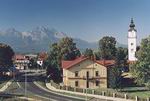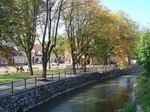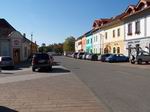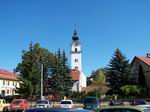Poprad is an administrative, economic, and cultural centre of the region located south of the High Tatra Mountains. It is situated in the southwest part of the Poprad Basin, with the Poprad River flowing through the town. Four formerly independent towns became the suburbs of Poprad during the more recent times. These are Spišská Sobota and Veľká, since 1945; Stráže pod Tatrami, since 1960 and Matejovce since 1977. Within the town limits, you can also find the Kvetnica Spa. The region has been inhabited since the early primeval ages. Poprad arose in the first half of the 13th century as a significant crossroad of trade routes. Copper was mined in this area from the 16th until the 18th century. The town also gained the right to organize the open-air markets in the 18th century. The majority of the population was farmers and simple craftsmen. In 1692, paper-producing company was founded in Poprad, and is known as the oldest company. The important milestone in further economic development of Poprad was in 1871, when it was connected to the Košice - Bohumin railway. In Poprad you will find an early gothic St. Egídius church from the 13th century, with wall paintings from the 15th century. From the original building remain only the tower, the church nave and the presbyterium. Next to the church building there is the Renaissance bell tower from 1658.
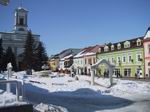

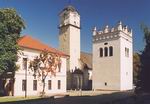

www.aquacity.sk
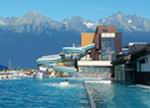
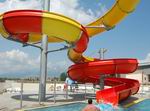
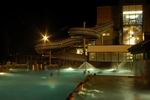
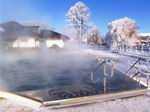
Dunajec is the only river that takes waters from the Slovak territory to the Baltic Sea. Its inflows such as: Biely (White) and Čierny (Black) Dunajec, Biela voda (White Water) as well as Javorinka are all fed from the Pieniny Mountains. At the town Nowy Targ the river turns to the east and picks up some other creeks such as Osturniansky (Kacvínsky) Creek, Rieka creek and Lipník. Flowing further away Dunajec created a romantic ravine in the limestone reefs, known as Prielom Dunajca (Dunajec Canyon). Lesnícky creek is also one of the Dunajec tributaries. Then Dunajec turns to the northwest, flows through the Gorcov area to the Nowosacká dolina (Nowosacká Valley), where it meets with the river Poprad, which is the biggest tributary of the Dunajec River. 40 km further away Dunajec finally joins the river Visla. 3,6 km2 of the Dunajec Canyon area is a protected National Natural Reserve. 20 km long part of its flow is at the same time the Slovak-Polish border. You can hike through the Dunajec Canyon following the tourist trail with 10 informative (explanatory) tables. You can also take the opportunity to raft down the Dunajec River, which is a favourite local tourist attraction.
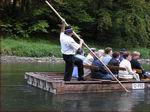
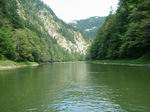
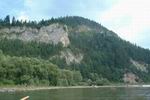
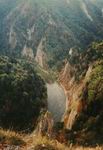
The name "Spiš" was derived from the name of the local castle ("Spiš Castle") that dominates in this region. It was built already in the 12. century. It stays on ruins of a former Celtic (later Slavic) hill-fort that had existed here already a long time before. Its surprisingly large area and a monumental architecture makes it the second largest castle in the Central Europe and one of the largest castles in Europe. It was a seat of the most important feudal lords of the Spiš region. It was inhabited till the end of the 17-th century. At the hill, opposite to the castle, there is situated a small village Spišská Kapitula. It is characteristic by its cathedral and two Roman towers. Since 1776 it has been a seat of the Spiš bishop see. An old village, Žehra, is situated below the castle, too. Its church is known by high quality wall paintings from the Middle-Ages. The whole area is surrounded by the Branisko mountain, numerous beautiful natural formations and travertine areas at the neighbouring Dreveník and Sivá Brada (Grey Beard).
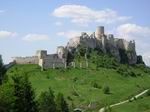

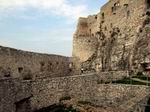

The High Tatras mountains are situated in the northern part of Slovakia, on the border with Poland. In 1949 it was declared to be the first Slovak national park ( TANAP) and in 1993 it was together with the polish part of the Tatras mountains declared by the UNESCO to be the "Biospheric reservation of the Tatras". The High Tatras were created about 60 mil. years ago heaving up the granite massif above the level of the surrounding land. It gained its current appearance by the glacier activity 2 mil. years ago. The characteristic peaks (such as Gerlachovský Peak, Kriváň, Rysy, Lomnický Peak), deep valleys of glacier origin ( Mengusovská Valley, The Grand and The Small Cold Valley), moraines and mountain lakes ( Štrbské Mountain Lake, Skalnaté Mountain Lake ) were formed the same way, too. In the region, there are situated villages with numerous historical monuments ( Kežmarok, Spišská Sobota) and tourist centres ( Old Smokovec, Štrbské Mountain Lake). From the above-mentioned centres you can start all day trips to the following attractive destinations ( Low Tatras, Pieniny, Slovak Paradise, Levoča, Spiš Castle).

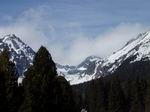
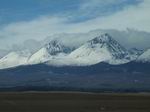
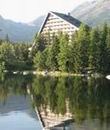
The first written notice about Veľká is from the year 1268. The term "Veľká" means "Big", because it was the biggest from the villages that are currently united in Poprad city. The local soil was the most fruitful in the region. Already in the 15-th century it was a developed and a rich town. In 1556 it completely burned down. Thanks to the activities of local craftsmen and merchants the town expanded greatly during the 17-th century. The most dominant crafts were blueprinting (of the best quality in Spiš) and art wood curving. In Veľká you will find a church of St. John Evangelist from the 13-th century with a bronze gothic baptistery (1439).
